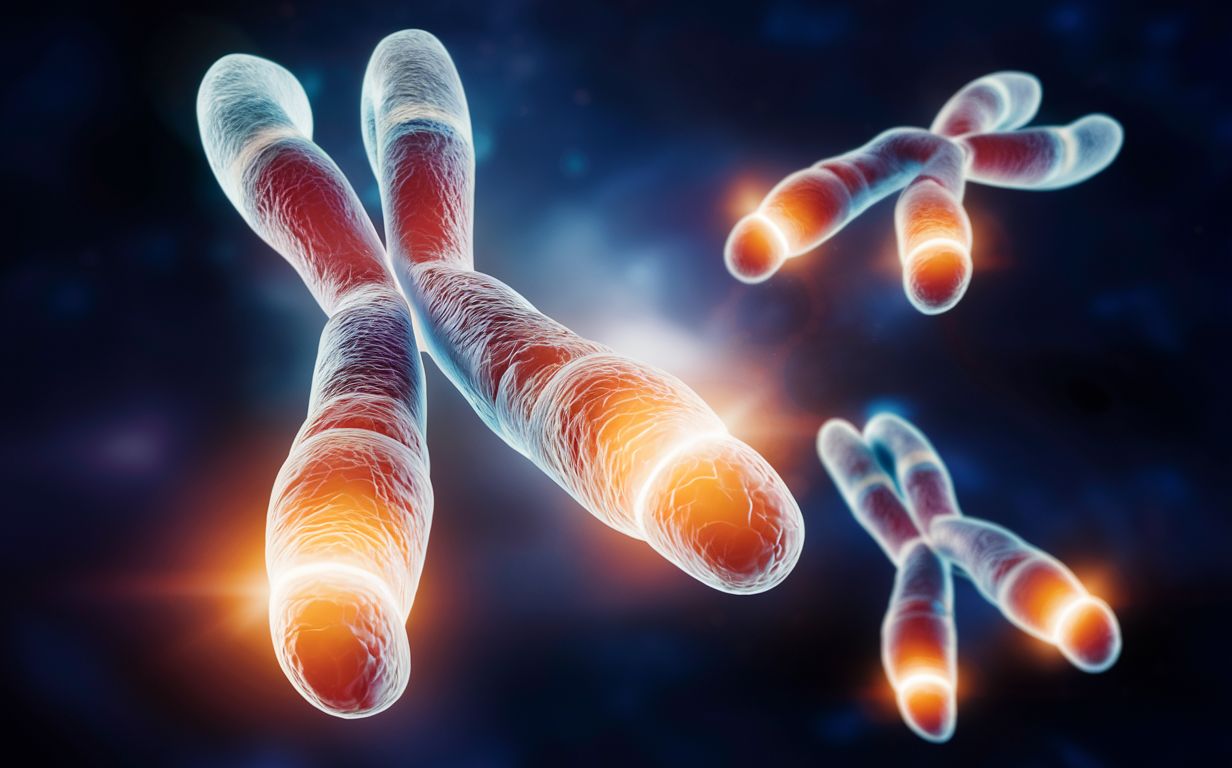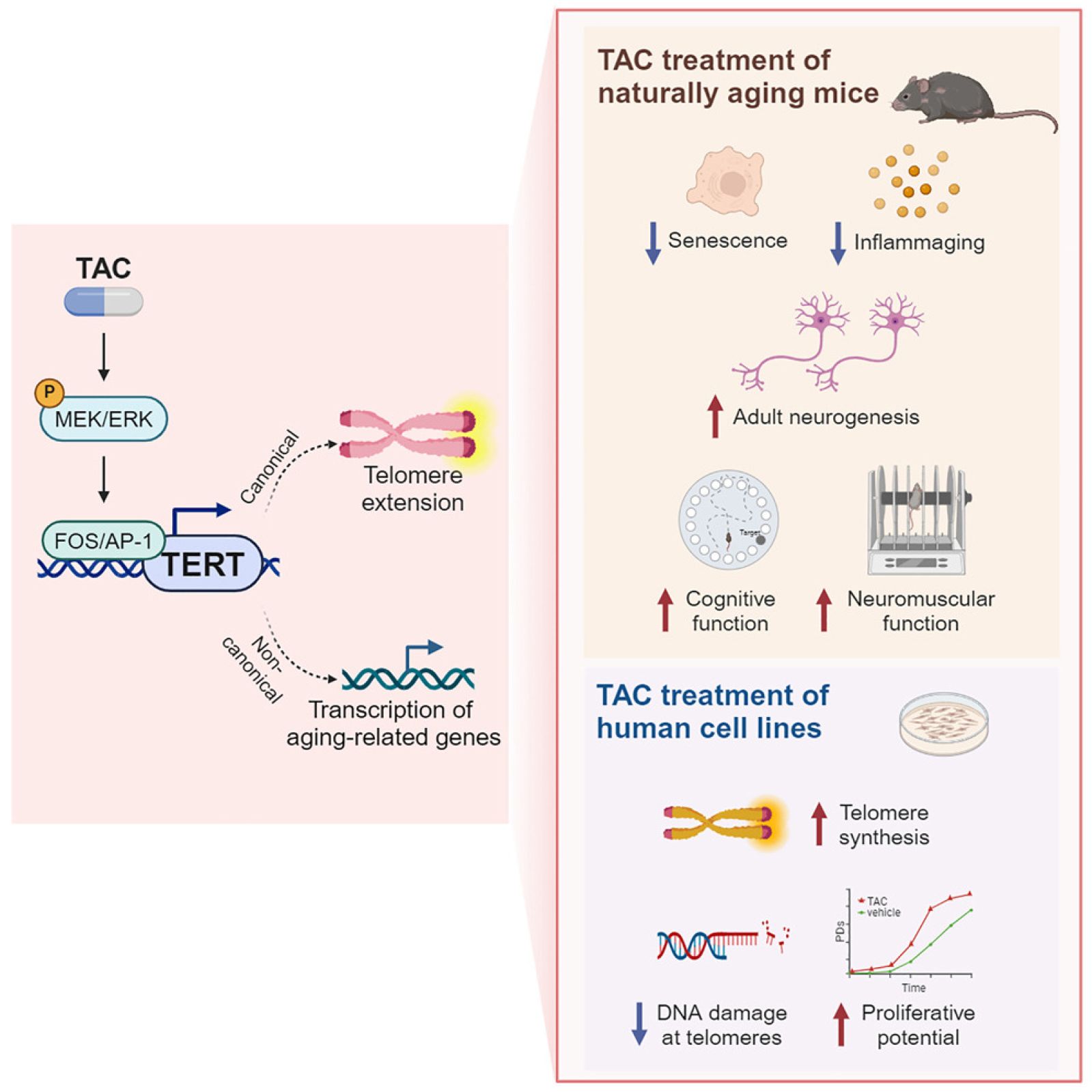Follow us on Google News (click on ☆)

With aging, numerous epigenetic changes lead to a progressive and irreversible functional and physiological decline. Among these changes, the shortening of telomeres is notable. These telomeres originally contain up to 15,000 base pairs but lose between 25 and 200 with each cell division.
Their excessive shortening or alteration triggers a continuous response to DNA damage, potentially leading to cellular senescence, wherein cells release inflammatory factors that damage tissues, thus accelerating aging and cancer. Telomerase (an enzyme that lengthens telomeres) decreases with age, correlating with age-related diseases such as Alzheimer's.
Researchers identified that telomerase reverse transcriptase (TERT) plays a key role not only in lengthening telomeres but also in regulating many genes involved in neurogenesis, learning and memory, cellular senescence, and inflammation. This study, with Hong Seok Shim as the first author, was recently published in Cell.
Telomerase is a protein complex that elongates telomeres, but its activity diminishes over time due to the epigenetic repression of TERT, especially during natural aging or age-related diseases. Researchers used a compound that restores physiological levels of TERT, which reduced cellular senescence and tissue inflammation, stimulated the formation of new neurons, and improved memory and neuromuscular functions in aged laboratory mouse models.

Ronald A. DePinho's laboratory had already shown that TERT gene deactivation in vivo led to premature aging, which was reversible by TERT reactivation. Researchers also observed that specific cells, such as neurons and cardiac cells, rejuvenated without the cell division required for telomere synthesis. These observations led them to hypothesize that TERT had functions beyond telomere synthesis and that the overall levels of telomerase were important in the aging process.
The team, led by Ronald A. DePinho and Hong Seok Shim, then sought to develop a drug to restore TERT levels. Using high-throughput screening of over 650,000 compounds, they identified a Telomerase Activating Compound (TAC) capable of epigenetically de-repressing the TERT gene and restoring its physiological expression observed in young cells.
In preclinical models equivalent to adults over 75 years old, a six-month TAC treatment led to the formation of new neurons in the hippocampus and improved cognitive performance. There was an increase in genes involved in learning, memory, and synaptic biology, consistent with TERT's ability to interact with transcription factor complexes regulating various genes.
TAC treatment also significantly reduced inflammation in blood and tissue samples and eliminated senescent cells by repressing the p16 gene, a key factor in senescence. TAC improved neuromuscular functions, coordination, grip strength, and speed, reversing sarcopenia, a condition where muscle mass, strength, and performance deteriorate with age.
Additionally, TAC treatment in human cell lines increased telomere synthesis, reduced DNA damage signals, and extended the proliferative potential of these cells, demonstrating TAC's efficacy in human ex vivo models.
"These preclinical results are encouraging, as TAC is easily absorbed by all tissues, including the central nervous system. However, further studies are needed to properly assess its safety and activity in long-term treatment strategies," said Ronald DePinho. "Our deep understanding of the molecular mechanisms of aging has revealed viable drug targets, allowing us to explore opportunities to intercept the causes of many chronic age-related diseases."